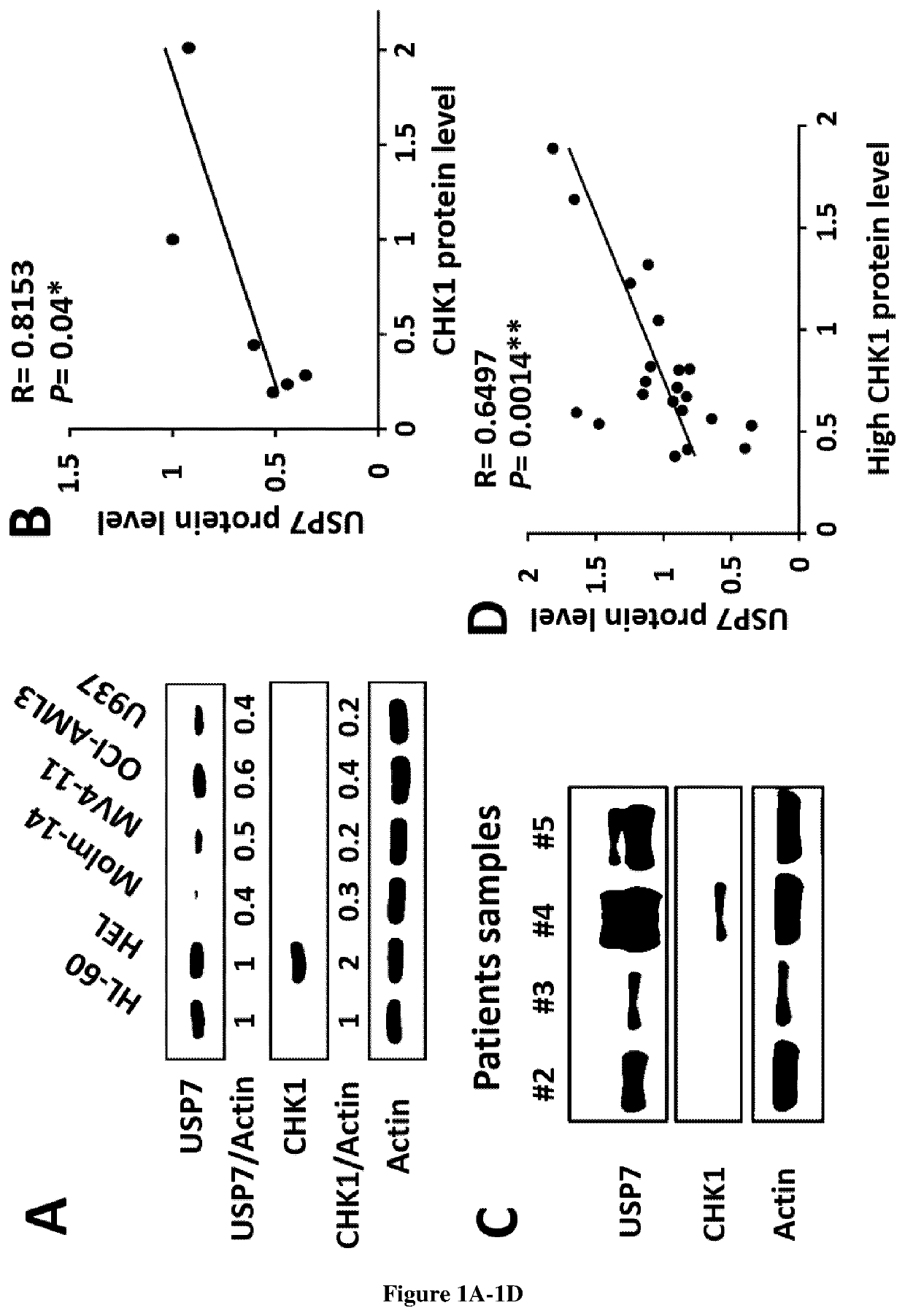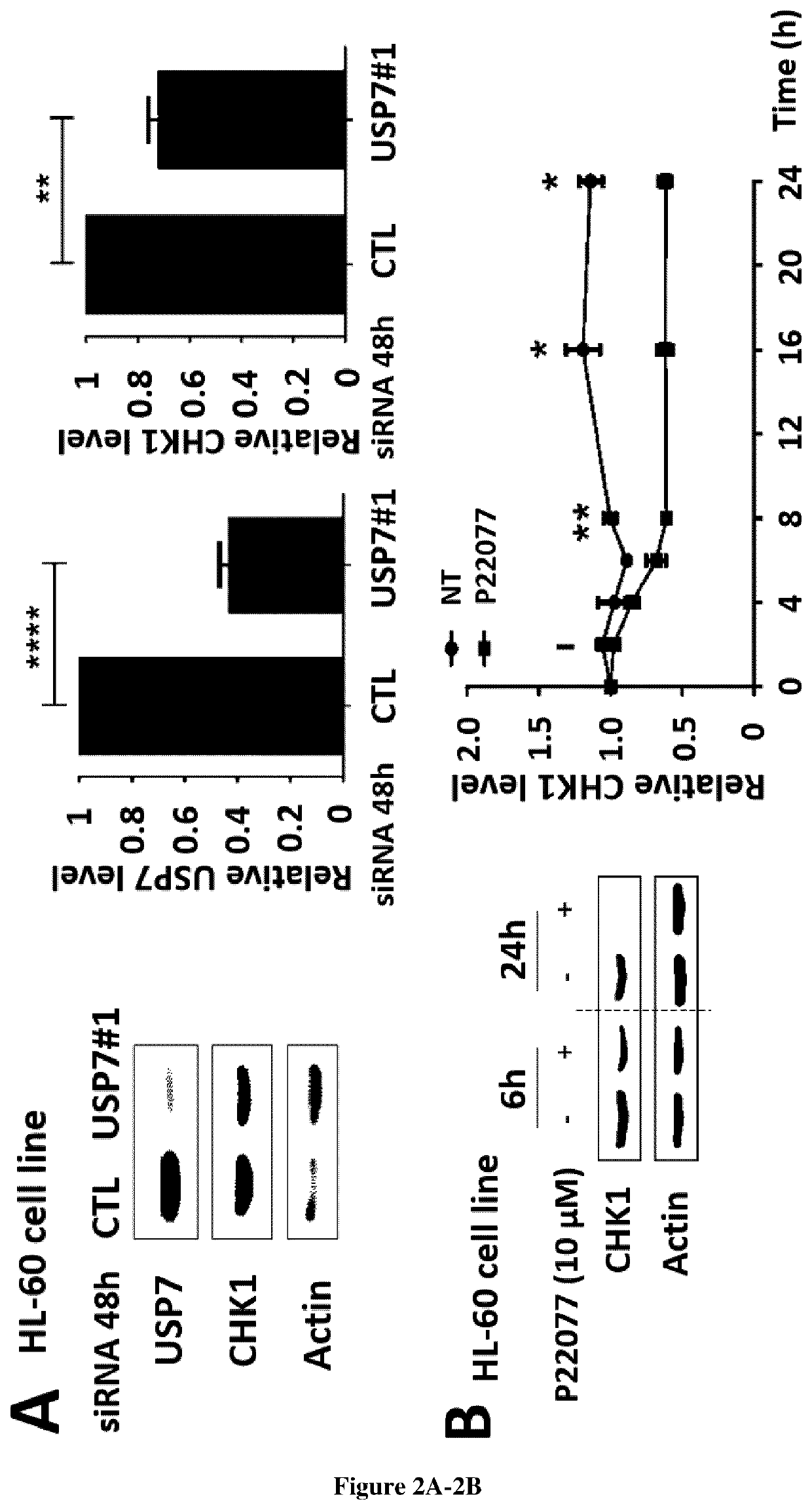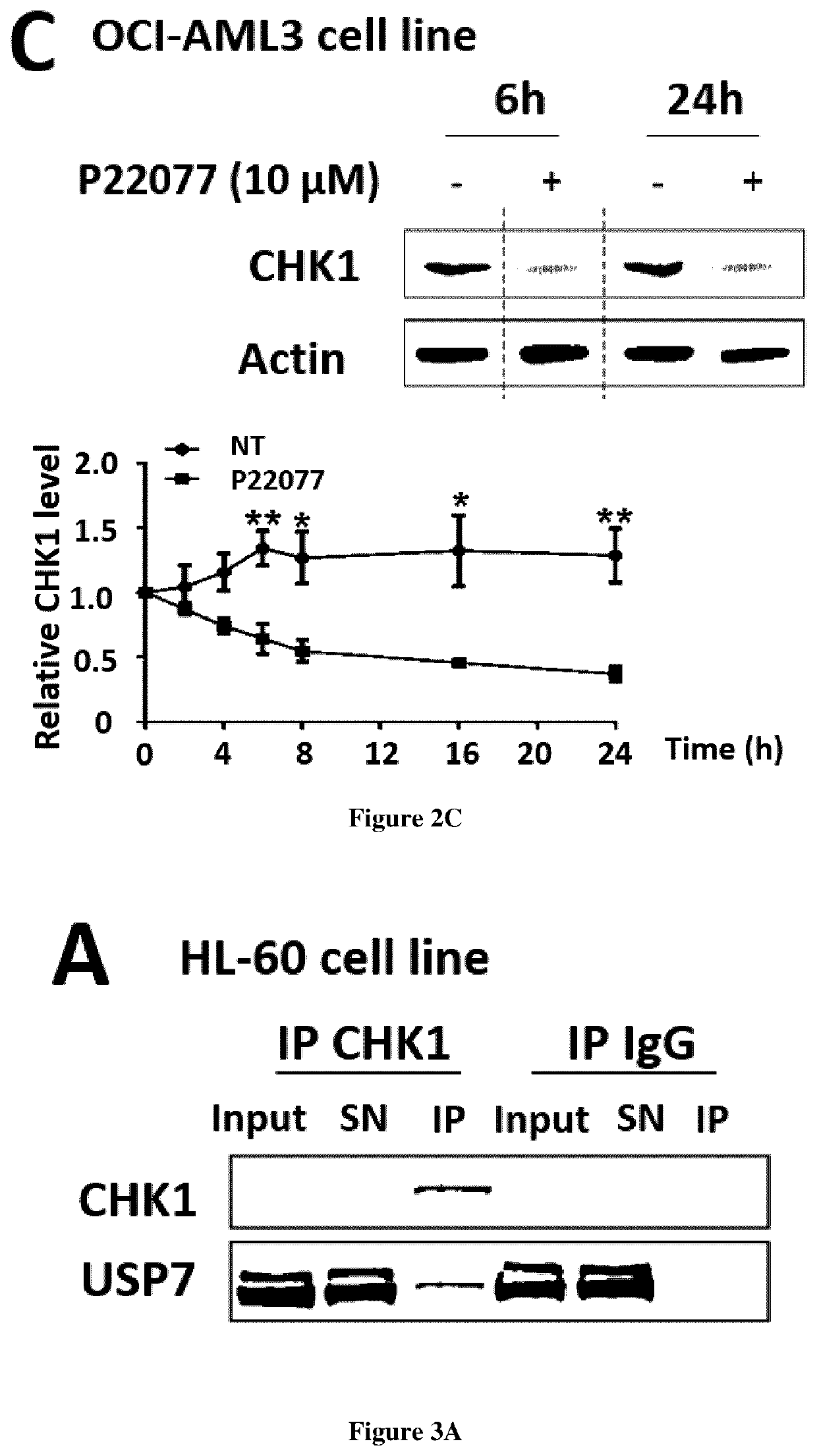Use of usp7 inhibitors for the treatment of acute myeloid leukemia (AML)
a technology of acute myeloid leukemia and usp7 inhibitors, which is applied in the direction of antineoplastic agents, drug compositions, medical preparations, etc., can solve the problems of poor 5-year overall survival, failure of bone marrow hematopoietic functions, and limited efficacy
- Summary
- Abstract
- Description
- Claims
- Application Information
AI Technical Summary
Benefits of technology
Problems solved by technology
Method used
Image
Examples
example
[0245]Methods:
[0246]Cell Lines, AML Samples and Treatments
[0247]Human leukemic cells lines were cultured as described in supplemental methods. Thawed samples (or derivative products, such as DNA and RNA) from 57 AML patients were analyzed for CHEK1 mRNA and CHK1 protein abundance after informed consent in accordance with the Declaration of Helsinki. The samples were stored at the HIMIP collection (BB-0033-00060). In conformance with French law, the HIMIP collection was declared to the Ministry of Higher Education and Research (DC 2008-307 collectionl) and obtained by transfer agreement (AC 2008-129) after approbation by ethical committees (Comite de Protection des Personnes Sud-Ouest et Outremer II and APHP ethical committee). Clinical and biological annotations of the samples have been declared to the CNIL (Comite National Informatique et Libertes).
[0248]The USP7 inhibitor, P22077 was purchased from Selleck Chemicals (S7133, Selleckchem, Houston, USA) and stored in DMSO at 10 mM. C...
PUM
| Property | Measurement | Unit |
|---|---|---|
| resistance | aaaaa | aaaaa |
| stability | aaaaa | aaaaa |
| Resistance | aaaaa | aaaaa |
Abstract
Description
Claims
Application Information
 Login to View More
Login to View More - R&D
- Intellectual Property
- Life Sciences
- Materials
- Tech Scout
- Unparalleled Data Quality
- Higher Quality Content
- 60% Fewer Hallucinations
Browse by: Latest US Patents, China's latest patents, Technical Efficacy Thesaurus, Application Domain, Technology Topic, Popular Technical Reports.
© 2025 PatSnap. All rights reserved.Legal|Privacy policy|Modern Slavery Act Transparency Statement|Sitemap|About US| Contact US: help@patsnap.com



